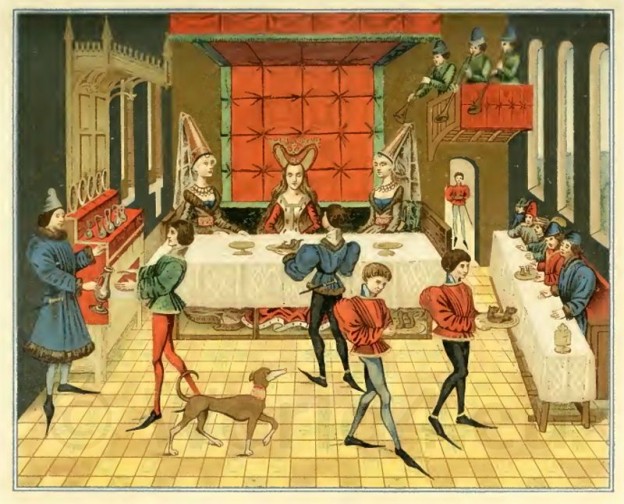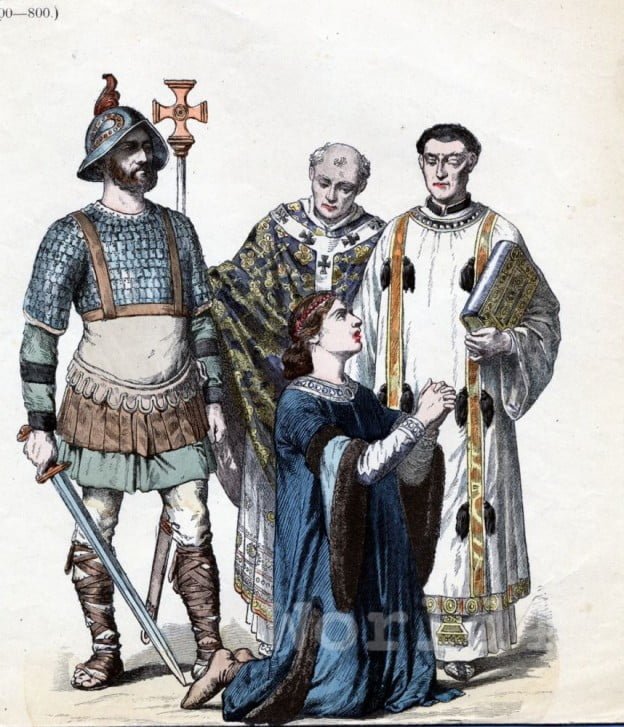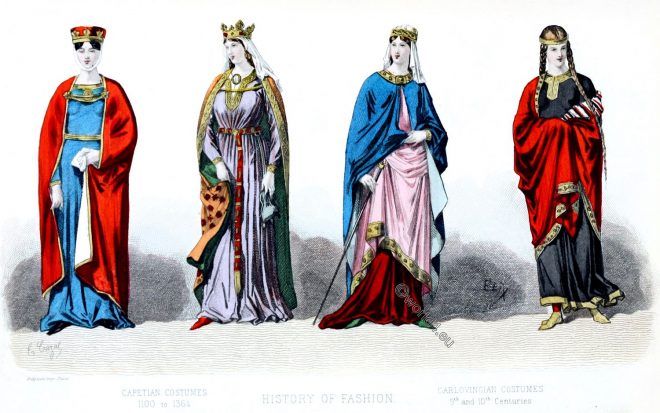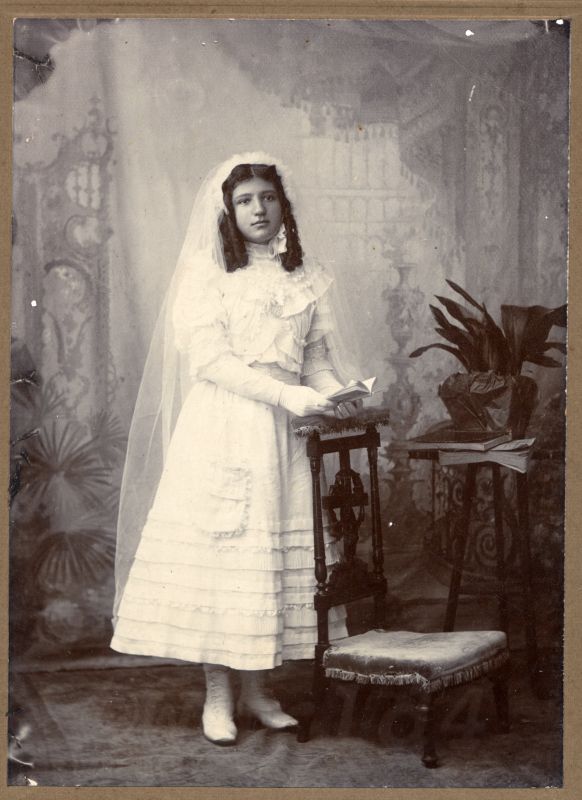German citizen. Civil costume. History of the costumes. Last third of the XVI century.
Category: Fashion History
Medieval court etiquette. The lady of the castle.
Medieval court etiquette. The lady of the castle. 15th century. Étiquette de la cour médiévale.
Carolingian Knight in armor, Bishop, Priest and Burgess.
Carolingian clothing 751-987. Knight in armor, Bishop, Priest and Burgess.
Carolingian clothing 751-987. Queen, noblewoman and prophetess.
Carolingian clothing 751-987. Carolingian Queen, Noblewoman and Prophetess.
Charles II the Bald. West Frankish king 9th century.
Charles II the Bald (823–877 Holy Roman Emperor Charles II, King of West Francia), with Military Leader, Knight in armor, Musician.
French fashion history. Middle Ages. 1422 to 1483.
French fashion history. Middle Ages. 1422 to 1483. Reign of Charles VI, called the Beloved (French: le Bien-Aimé), Charles VII, called the Victorious (French: le Victorieux) and Louis XI. called “Louis the Prudent” (French: le Prudent).
The Carolingian fashion period 752-987. Reign of Charlemagne.
Reign of Charlemagne – The women of the tenth century wear two tunics – Judith’s belt – A veil is obligatory – Miniatures in the Mazarin Library- Charles the Bald’s Bible Shoes – Dress of Queen Lutgarde – Dress of Rotrude and Bertha – Gisla and other kings women of the Emperor – The Successors of Charlemagne – Cannes – Adelaide of Vermandois – The dress of widows.
Belle epoque costume and style. Argentina 1900.
Belle epoque costume and style. Argentina 1900. Art Nouveau period. Portrait of a young woman in Buenes Aires, Argentina in 1900. Dressed and decorated in the manner of a bride… Read More
Belle Epoque Fashion Buenos Aires in 1890
Costumes of the art nouveau period. Buenos Aires, Argentina in 1900
Fin de siècle fashion. Art nouveau costume. Style in 1900
Fin de siècle fashion. Art nouveau costume. Style in 1900. Illustration about 1900, shows a girl in front of a vibrant landscape in art nouveau fashion. The wide cut of… Read More








